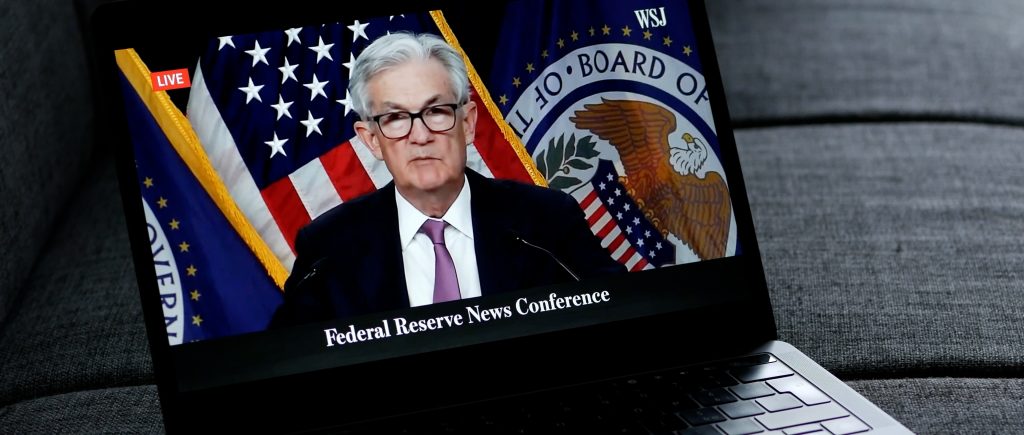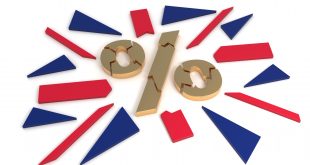The U.S. economy is entering a period of unprecedented uncertainty, driven by a sweeping array of new tariffs introduced by the current administration, according to Federal Reserve Chair Jerome Powell. Speaking at a high-profile economic forum in Chicago, Powell described these trade policies as a historic shift, unparalleled in modern times, with far-reaching implications for inflation, growth, and employment. With tariffs already imposed on aluminum, steel, and a broad range of imports, and additional duties planned for critical sectors like semiconductors, pharmaceuticals, and consumer goods, Powell warned that the economic landscape is becoming increasingly volatile. These measures, he cautioned, could push the nation toward higher prices, slower growth, and rising unemployment, posing a significant challenge to the Federal Reserve’s dual mandate of maintaining price stability and maximizing employment.
The scope of the tariffs is staggering. Current policies include a 25% duty on aluminum and steel, a 145% levy on Chinese imports, and a 10% baseline tariff on all U.S. imports, with plans for further expansion. While a temporary exemption has been granted for select electronic goods, Powell emphasized that the broader economic consequences remain uncertain, particularly as trading partners consider retaliatory measures. The immediate impact is already evident: consumer prices are expected to rise as the cost of imported goods increases, and businesses are grappling with supply chain disruptions and higher input costs. Powell noted that these pressures could lead to stagflation—a rare and dangerous combination of stagnant economic growth and persistent inflation not seen since the 1970s. For the Federal Reserve, this creates a dilemma, as efforts to curb inflation through higher interest rates could exacerbate unemployment, while stimulating growth could fuel further price increases.
Powell highlighted the complexity of the Fed’s position during his Chicago remarks, noting that the central bank is opting to hold interest rates steady for the time being. This decision reflects a cautious optimism about the economy’s underlying strength. Consumer spending, a key driver of economic activity, continues to grow at a modest pace, and the labor market remains resilient, with unemployment near historic lows. However, Powell acknowledged that cracks are beginning to appear in the economic foundation. Surveys indicate a sharp decline in consumer confidence, driven by concerns over rising costs and trade policy uncertainty. Businesses, meanwhile, are scaling back investment and hiring plans, wary of the evolving tariff landscape and its potential to disrupt global supply chains. Powell warned that these shifts in sentiment could have a self-reinforcing effect, dampening economic activity further if left unchecked.
The Federal Reserve is also contending with the challenge of interpreting economic data distorted by the tariffs’ immediate effects. Powell pointed out that a rush of imports, as businesses stockpile goods to avoid new duties, could artificially inflate gross domestic product (GDP) figures in the short term, masking underlying weaknesses. Similarly, disruptions in trade flows could skew inflation metrics, complicating the Fed’s ability to gauge the true state of the economy. To navigate this uncertainty, Powell stressed the importance of a data-driven approach, with the central bank closely monitoring a range of indicators, from consumer prices and wage growth to business investment and trade balances. This vigilance, he argued, is critical to ensuring that the Fed can respond swiftly to emerging risks.
Looking ahead, Powell outlined the delicate balancing act facing the Federal Reserve. If inflation accelerates as a result of the tariffs, the central bank may be forced to maintain or even raise interest rates, a move that could slow economic growth and increase borrowing costs for businesses and consumers. Conversely, if the tariffs lead to a significant weakening of economic activity, the Fed may need to cut rates to stimulate demand, a step that could exacerbate inflationary pressures. Powell emphasized the importance of managing long-term inflation expectations, noting that a one-time price surge driven by tariffs could become a persistent problem if businesses and consumers begin to anticipate higher inflation. To prevent this, the Fed is working to communicate its commitment to price stability, even as it grapples with the unpredictable effects of the administration’s trade policies.
The global implications of the tariffs are equally concerning, Powell noted. Retaliatory measures from trading partners, including Canada, Mexico, and the European Union, could escalate into a broader trade war, further disrupting global supply chains and raising costs for U.S. businesses and consumers. Developing economies, which rely heavily on exports to the U.S., may face significant economic strain, potentially triggering a slowdown in global growth. Powell warned that these dynamics could amplify the tariffs’ domestic impact, creating a feedback loop that deepens economic challenges at home and abroad. The Federal Reserve is actively coordinating with international counterparts to assess these risks and prepare for potential spillover effects.
Despite the mounting challenges, Powell sought to reassure audiences that the Federal Reserve is well-equipped to navigate this turbulent period. Drawing on its experience managing past crises, from the 2008 financial meltdown to the COVID-19 pandemic, the Fed has developed a robust toolkit for responding to economic shocks. Powell highlighted the central bank’s ability to adjust interest rates, provide liquidity to financial markets, and communicate its policy intentions clearly to stabilize expectations. However, he acknowledged that the unique nature of the current tariff-driven disruption requires a flexible and adaptive approach, with no single playbook to guide the Fed’s actions.
As the administration continues to roll out its trade agenda, the economic outlook remains clouded by uncertainty. Powell reiterated that the Federal Reserve is in a wait-and-see mode, prepared to act decisively as the full scope of the tariffs’ effects becomes clearer. For now, the central bank is focused on maintaining stability, supporting the economy’s resilience, and preventing inflation from spiraling out of control. With the nation facing one of its most complex economic challenges in decades, Chair Jerome Powell and the Federal Reserve are under intense scrutiny, tasked with steering the economy through uncharted territory with precision, foresight, and resolve.

 Noor Trends News, Technical Analysis, Educational Tools and Recommendations
Noor Trends News, Technical Analysis, Educational Tools and Recommendations




